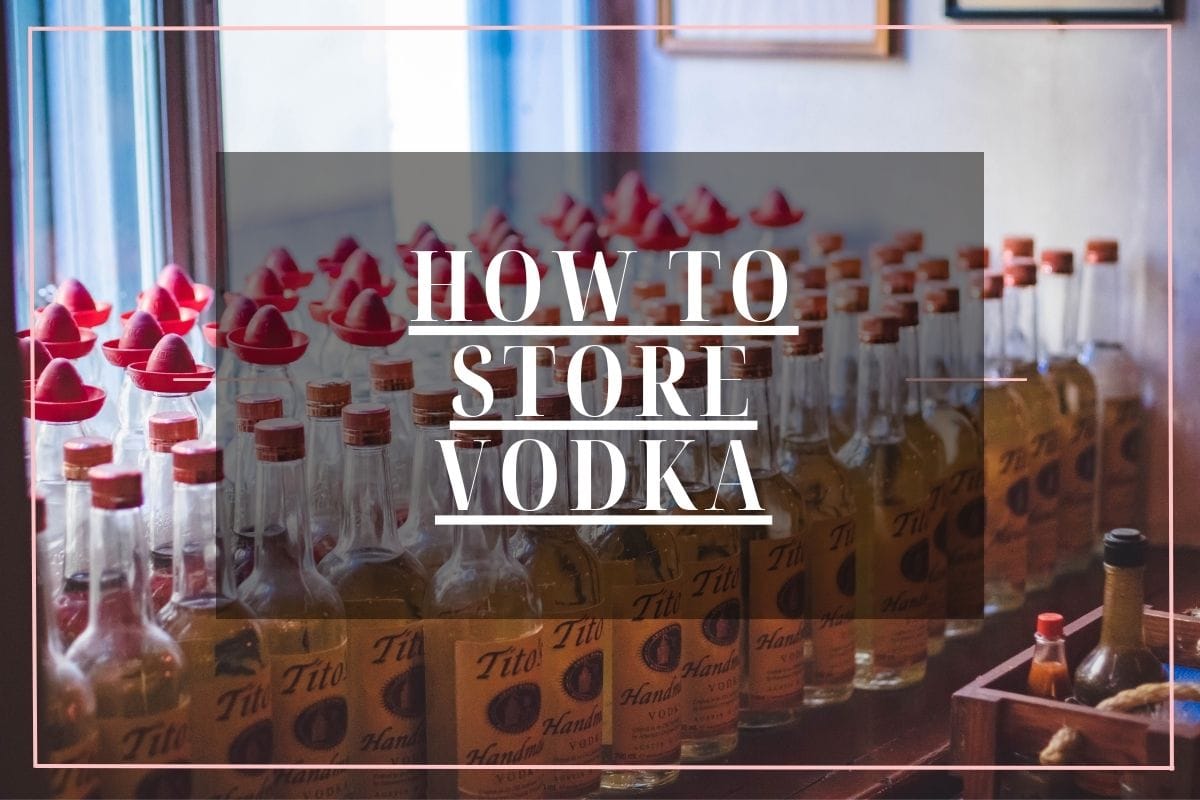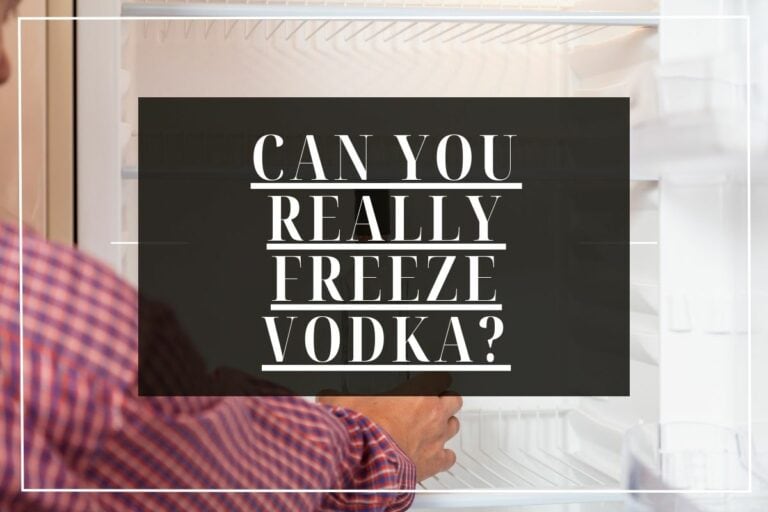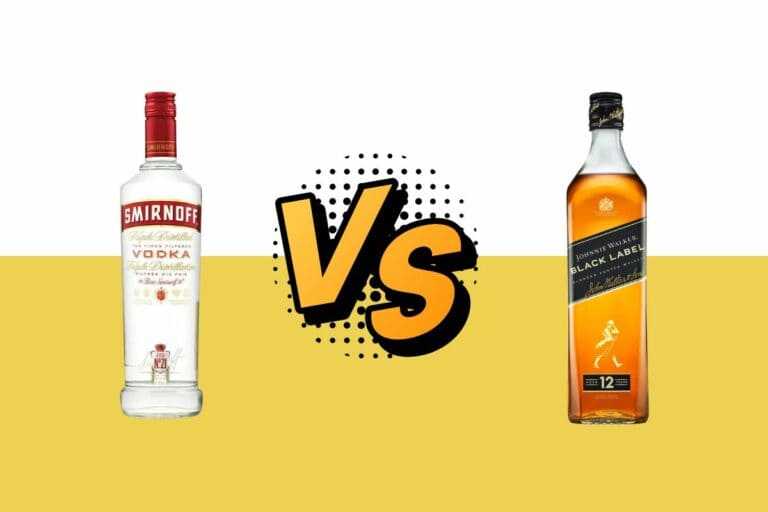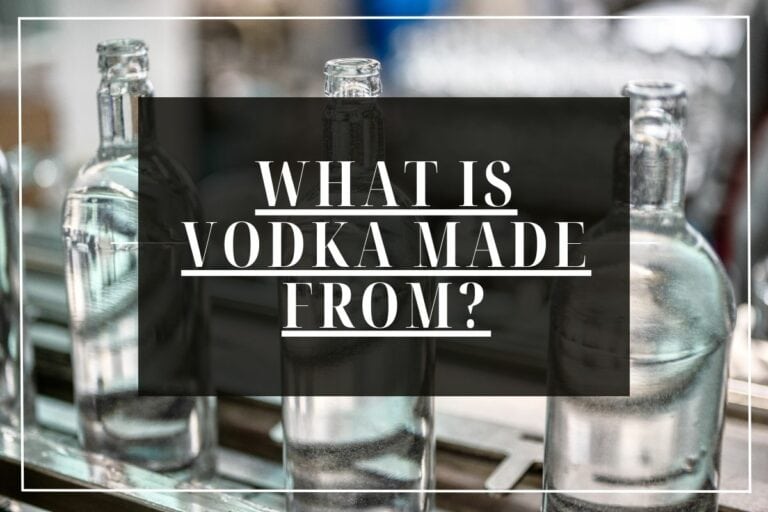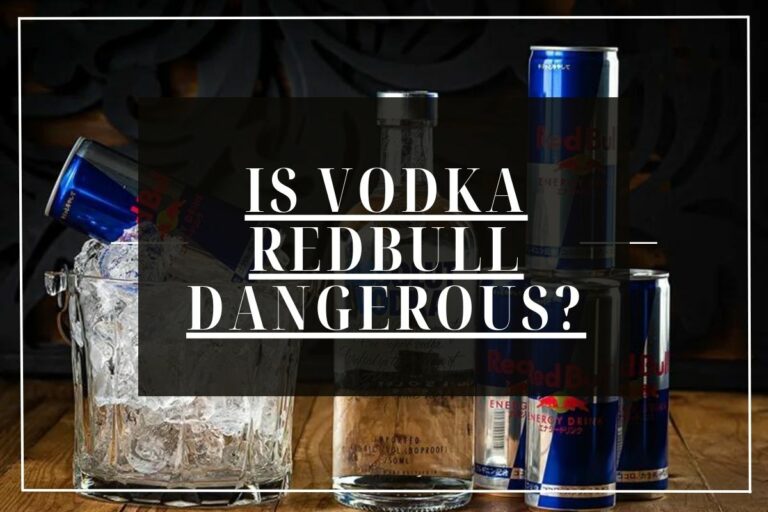Storage Hacks: The Secret to Keeping your Vodka Fresh and Potent!
Storing vodka correctly can have a significant impact on maintaining its quality and flavor. Vodka, a popular distilled spirit with an alcohol content of 30-40% ABV, requires specific storage conditions for optimal preservation.
This guide will provide step-by-step instructions on how to properly store your vodka—both opened and unopened—to ensure it remains fresh longer. Ready to become a pro at storing vodka? Keep reading!
Key Takeaways
- Vodka should be stored upright in a cool and dark spot.
- Opened vodka bottles need to be tightly sealed.
- Plastic containers and freezing are bad for preserving vodka flavor.
- Flavored vodkas have separate storage needs because of the extra ingredients.
Proper Storage Conditions for Vodka
Storing vodka correctly ensures its great taste and longevity. Keep your vodka cool, ideally at room temperature or slightly chilled, to maintain its quality. Avoid exposing the bottle to direct sunlight or high humidity levels as it can affect the flavor of the spirit.
Always store your vodka upright; this not only reduces the risk of leakage but also prevents unnecessary contact between alcohol and cap which could lead to contamination or oxidation changes.
Proper storage conditions are key in preserving your bottles of this versatile spirit for consumption anytime you desire a sip.
Keep it cool (room temperature or slightly chilled)
Storing vodka at a cool room temperature or slightly chilled is key to maintaining its quality and flavor. The ideal storage conditions fall between 32 and 34 degrees Fahrenheit, which enhances the taste and texture of your drink.
Keeping your vodka in a controlled environment away from direct sunlight, ensures it remains enjoyable for much longer. Dark storage also supports this effort as unauthorized light can tamper with the aesthetic value of your bottle.
Sealed containers further add to these storing measures by keeping out unwanted air particles that speed up oxidation effects on opened bottles of vodka–thus eliminating chances of spoilage or off flavors popping up when you finally decide to enjoy your beverage.
Optimal temperature control reflects in an improved textural experience with each sip taken securing memorable enjoyment moments for you and anyone else lucky enough to share in them!
Avoid direct sunlight and humidity
Direct sunlight and high humidity conditions pose a challenge to the quality of stored vodka. Sunlight, particularly direct beams, can hasten evaporation while affecting its taste profile – this becomes even more noticeable if the vodka is stored in clear bottles.
Therefore, proper storage conditions for vodka involve removing it from sunlit areas and placing it somewhere cool and dim.
Humidity levels also have a role to play in maintaining your liqueur’s ideal state; high moisture settings can negatively impact both the bottle material and alcohol content over time, leading to potential deterioration.
Opting for dry storage spots with controlled temperature can be helpful in preserving your drink’s fidelity.
Store upright to prevent leakage
Positioning your vodka bottle upright is crucial in ensuring its optimum quality. This upright storage method prevents leakage, which can cause a significant loss of your favorite drink.
Additionally, it averts unnecessary evaporation that could potentially alter the taste of your vodka. A tightly sealed and correctly positioned bottle maintains the freshness and flavour, providing an enjoyable drinking experience every time you pour yourself a glass.
Therefore, make certain to adopt this best practice for vodka storage: keep it upright! The integrity of your delicious spirit depends on it!
Storing Unopened Vodka
For optimal freshness, store unopened vodka in a cool and dark location where it’s less exposed to temperature swings.
Choose a cool and dark location
Your unopened vodka prefers a cool and dark location to rest. A pantry or cellar, normally out of day-to-day hustle and bustle, stays relatively undisturbed, making it an ideal haven for your liquor stash.
A dark cupboard or a storage room that doesn’t get direct sunlight also suits the purpose well. Storing in such areas helps protect against degradation while ensuring optimum taste as exposure to light can affect its quality negatively.
Don’t subject your bottles to sudden temperature changes though; consistent coolness is key here! So scout around in your home, for spots far from windows or radiators, because treating vodka right means extending its shelf life!
Avoid extreme temperatures or fluctuations
Avoiding extreme temperatures or fluctuations is vital in maintaining vodka quality. Keeping your unopened vodka bottles stored between 32 and 34 degrees Fahrenheit offers optimal preservation.
Avoid storing them in places that are prone to thermal variations such as the kitchen, laundry room, near windows or heating vents.
Exposure to drastic temperature changes can rob your vodka of its unique flavors and aromas. High temperatures trigger evaporation while lurking on the freezing end might lead to consistency alteration resulting in a less pleasant drinking experience.
The key is temperature stability, store your vodka where it isn’t subject to direct sunlight exposure prevention should be prioritized too for preserving quality.
Storing Opened Vodka
Upon opening a vodka bottle, ensure the lid is tightly sealed after each use to prevent undesired oxidation. A bottle stopper or vacuum sealer can enhance preservation and keep your spirit fresh longer.
Act promptly because once opened, vodka taste may change if not consumed within several months; it doesn’t go bad but may lose its crisp flavor profile over time.
Seal the bottle tightly to prevent oxidation
Ensuring your vodka retains its original flavor and quality involves proper sealing of the bottle after each use. Oxidation kicks in when air infiltrates your vodka, leading to change in taste – often leaving a vinegary kick.
A significant way to combat this is by sealing the bottle tightly to minimize oxidation. By simply screwing on the cap tightly, you greatly reduce air exposure and safeguard both flavor and quality of your vodka from degradation.
For bottles which had quite a volume consumed already, considering transferring the remainder into a smaller one for storage also helps limit airspace inside the bottle thereby preventing oxidation.
Consider using a bottle stopper or vacuum seal*
Using a bottle stopper or vacuum seal considerably helps in preserving the quality of opened vodka. Bottle stoppers work by sealing the container tightly, thus preventing excess air from entering and causing oxidation.
On the other hand, vacuum sealers eliminate air entirely within the bottle to maintain freshness for a longer period. This is mainly because oxygen accelerates deterioration rates in alcohol.
Rubber stoppers, extensively used with vacuum sealers, form an airtight barrier that directly combats this issue. So next time you need to store opened vodka, don’t hesitate to grab those handy tools; make sure it’s not a plastic bottle though! After all, if we’re safeguarding flavor and shelf-life at maximum capacity demands reliable storage methods like these.
Recommended time frame for consumption
Vodka enthusiasts know the importance of savoring a superior spirit. One critical factor is timing, as vodka’s flavor can start to decline after being opened for a while. Experts advise that you should make it a point to consume your bottle within six to eight months of its initial release – this is the recommended time frame for consumption where vodka’s distinct character and nuances are at their peak.
Storing an open bottle properly enhances longevity and prevents flavor degradation. Refrigeration serves as your best ally in preserving the quality of opened vodka. Aim to use refrigerated bottles reasonably soon – think about arranging a social gathering or inventing some new cocktail recipes! Stay mindful though; safety comes first before prolonging pleasure: always check for any off flavors or signs of spoilage prior opening that cap again.
General Tips for Vodka Storage
Take note of these essential vodka storage commands: pass on plastic bottles, avoid freezing—save for cocktail preparation—and always review your vodka for spoiliness or unusual flavors.
Tune in to the next section for a thorough examination on flavored vodkas’ unique storing requirements!
Don’t store vodka in plastic bottles
Plastic bottles may seem like a convenient option for storing vodka, particularly during outdoor festivals. However, this practice can harm your alcohol and possibly even your health.
Both opened and unopened plastic containers pose major risks since they interact with the liquor. This undesirable interaction often impairs both the shelf life preservation and freshness of your vodka – it’s essential to think about proper vodka storage if we want to maintain top quality for consumption! Transparent plastic bottles also allow light inside which speeds up spoilage rates.
Over time, certain potentially harmful chemicals found in plastics might leach into the alcohol as well; posing an additional health hazard that lovers of this robust spirit should seriously consider avoiding.
Avoid freezing vodka (unless using for vodka-based cocktails)
Storing vodka in your freezer might seem like a good idea, but it’s not the best practice for maintaining flavor. Here’s why: cold storage can actually diminish the complexity and taste of this potent spirit.
No scientific reasoning supports freezing vodka for general use, contrary to what some people believe. Vodka won’t freeze solid unless stored at below -27 degrees Celsius (-16.6 degrees Fahrenheit).
The only exception when freezing is acceptable occurs when preparing vodka-based cocktails where strict temperature control helps create optimal cocktail consistency and experience.
Instead of reaching for the ice tray, consider keeping your vodka chilled, because that’s how its full flavor unfolds best!
Check for any signs of spoilage or off flavors before consuming
Spoilage is a rarity in vodka, but it’s not impossible. Even the strongest spirit will show signs of weakening if its storage conditions aren’t optimal or the seal isn’t tight enough.
One main indication that your alcohol content is deteriorating would be a noticeably weaker taste. Don’t shrug off this shift; it’s an important red flag for potential spoilage.
Another key aspect to look out for when dealing with stored vodka involves detecting any significant alterations in flavor or pungent aromas known as ‘off flavors’. Vodka, unlike foodstuff, doesn’t rot per se, but improper storage can have detrimental effects on its quality and freshness.
If you notice unusual smells or tastes popping up from your drink, this could mean the shelf life has been compromised due to exposure to air and environmental factors. It’s wise then to refrain from consuming until sure about safety.
Special Storage Considerations for Flavored Vodkas
Flavored vodkas have unique storage considerations due to their added ingredients. These infusions can impact the vodka’s preservation and shelf life, requiring special temperature guidelines compared to unflavored variants.
It’s crucial to understand these nuances for maintaining your flavored vodkas’ taste and quality over time.
How Ingredients Impact Preservation
Flavored vodkas demand special attention for storage due to their extra ingredients. Each element introduces different preservation requirements that directly tie into the shelf stability of these spirits.
Certain flavor additions may accelerate oxidation or speed up spoilage, thereby shortening the loved vodka’s longevity. Also, some additives require cool or even chilled conditions instead of standard room temperature for adequate preservation.
The nature and ratio of flavor ingredients in your vodka could also impact its extended shelf life. While pure vodka can hold onto its taste and consistency practically forever, flavored variants typically need consumption within six months post-opening to retain their pristine essence.
So those peach drops and raspberry swirls come with a little more responsibility when it comes to safeguarding your flavorful spirit!
The Shelf Life of Flavored Versus Unflavored Vodka
The shelf life of flavored and unflavored vodka varies significantly. Below is a comparative table showing how long both types can last when properly stored.
| Vodka Type | Unopened Shelf Life | Opened Shelf Life |
| Unflavored Vodka | Indefinite, recommended within 30 to 50 years for optimal potency and flavor | Varies, but advisable to consume within a reasonable time frame after opening to maintain quality |
| Flavored Vodka | Can last up to 2 years when unopened, but can last indefinitely if properly stored | Should be consumed shortly after opening to enjoy optimal flavor and quality |
The key factor in determining the shelf life of both flavored and unflavored vodka is the storage conditions. Both variants last longer when kept in a cool, dark place, and their bottles are tightly sealed to prevent oxidation.
Special Temperature Guidelines for Flavored Variants
Flavored vodka variants engage in a delicate dance with temperature. Extreme cold, like that found in a freezer, can dull the vibrant bouquet of essences inherent to these infusions.
It masks specific notes and layers of flavor which are crucial to enjoying their unique profiles.
Storage at room temperature often suits typical vodkas, taking into account its enduring origins from chilly Russia. But for flavored variants like Grey Goose Le Citron or Smirnoff Vanilla, refrigeration becomes essential.
Aim for an optimal range between 50 and 60 degrees Fahrenheit; this ensures preservation without compromising on aroma or taste quality. This also prevents any potential spoilage and maintains overall drinkability over time.
Conclusion
Storing vodka right is a sure way to maintain its quality and taste, whether opened or unopened. Experiment with various methods depending on your access to cool, dry storage areas.
Ultimately, it’s about creating optimal conditions for keeping your vodka at peak flavor for as long as possible. Enjoy every sip from the first pour to the last without compromise!

